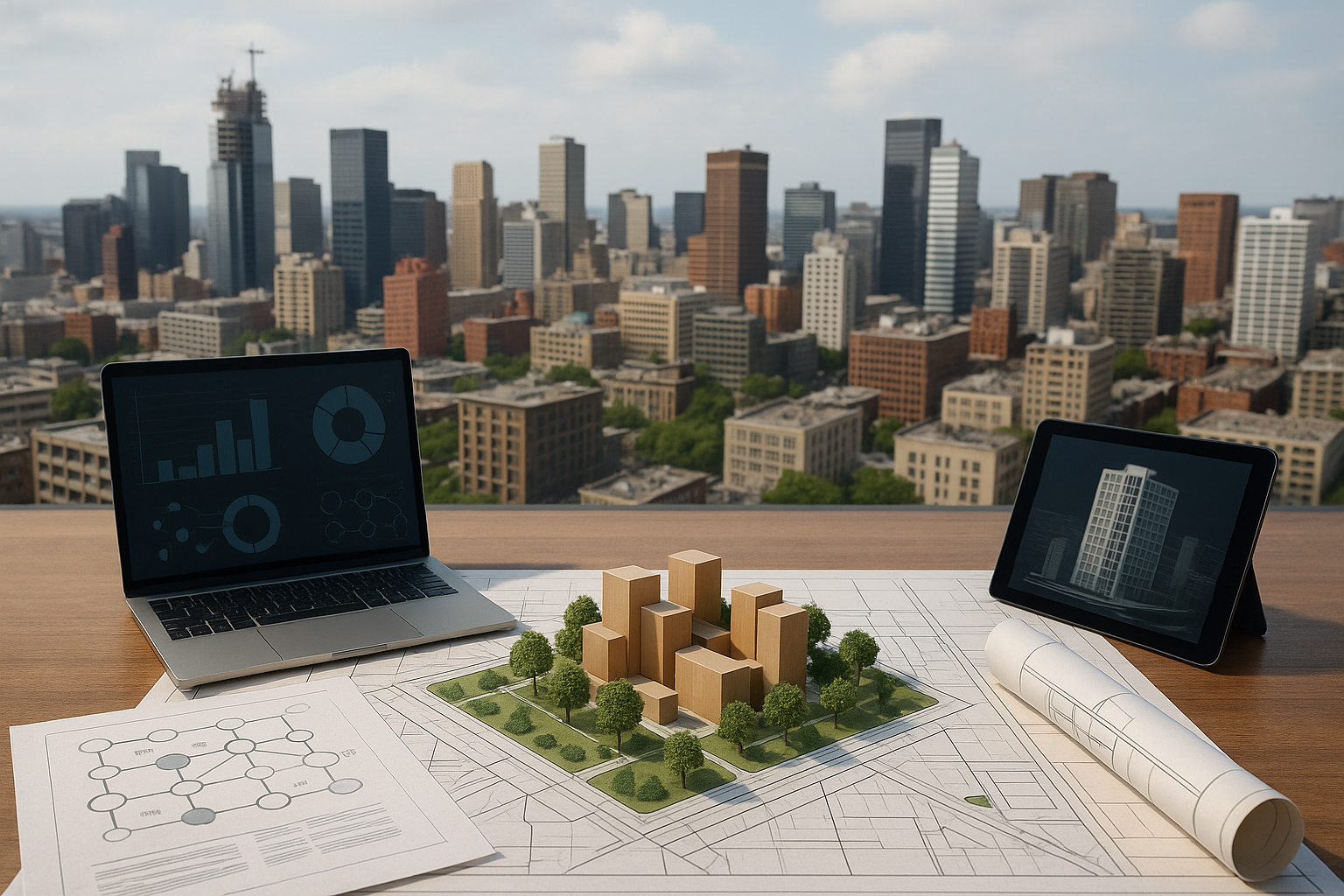Urban regeneration still lacks digital continuity beyond planning phase
Technologies such as Geographic Information Systems (GIS) and Building Information Modeling (BIM) or City Information Modeling (CIM) dominate the Pre-UR stage. These tools support spatial analysis, stakeholder coordination, and participatory planning. In the D-UR phase, tools like the Internet of Things (IoT) and digital platforms emerge as enablers for real-time monitoring and construction optimization. However, Post-UR phases, where operations, maintenance, and performance feedback are critical, remain underutilized in terms of digital integration.

A new systematic review sheds light on the evolving role of digital technologies in urban regeneration, highlighting how different stakeholders apply emerging tools across various stages and scales of redevelopment. The study, titled “Digital Technologies in Urban Regeneration: A Systematic Literature Review from the Perspectives of Stakeholders, Scales, and Stages” and published in Buildings, examines the fragmented research landscape and offers a structured classification of digital technology adoption in urban renewal practices worldwide.
The authors analyzed 56 peer-reviewed articles drawn from the Scopus and Web of Science databases using a mixed-methods approach that combined systematic literature review, bibliometric techniques, and meta-analysis. Their findings point to distinct patterns in technology use across urban regeneration phases and underscore critical gaps in stakeholder-technology alignment, especially in later project stages and among marginalized actors.
How are digital technologies distributed across urban regeneration phases?
As per the study, digital technologies are applied across the different phases of urban regeneration: pre-regeneration (Pre-UR), during-regeneration (D-UR), and post-regeneration (Post-UR). The findings suggest that technology use is heavily concentrated in the initial planning and design stages, with comparatively limited application in the implementation and post-operation phases.
Technologies such as Geographic Information Systems (GIS) and Building Information Modeling (BIM) or City Information Modeling (CIM) dominate the Pre-UR stage. These tools support spatial analysis, stakeholder coordination, and participatory planning. In the D-UR phase, tools like the Internet of Things (IoT) and digital platforms emerge as enablers for real-time monitoring and construction optimization. However, Post-UR phases, where operations, maintenance, and performance feedback are critical, remain underutilized in terms of digital integration.
The study reveals that the temporal application of digital technologies often lacks continuity, leading to fragmented workflows and missed opportunities for feedback-driven refinement. Most projects fail to sustain technological engagement beyond the design phase, thereby reducing the potential impact on long-term urban quality and sustainability.
Which stakeholders use which technologies and who gets left behind?
The study also investigates the relationship between stakeholders and the types of technologies they employ. The study identifies six major stakeholder groups in urban regeneration: public sector, private developers, research institutions, end users or residents, technology providers, and cross-sector collaborations.
Public agencies and private developers are the most active adopters, with a strong preference for GIS, BIM/CIM, and digital planning tools that facilitate land-use assessment, regulatory compliance, and investment modeling. Research institutions primarily deploy simulation and artificial intelligence (AI) models to explore policy outcomes and optimize regeneration strategies.
However, the review finds a critical gap in technology access and agency among end users, particularly residents and community organizations. Their involvement is often confined to the consultation stage and lacks substantive digital empowerment. Technologies that could enable participatory urbanism, such as digital platforms and mobile-based engagement tools, are rarely used to their full capacity.
Furthermore, cross-sectoral collaborations involving multiple stakeholders show the most diverse technology usage but are underrepresented in the current literature. This suggests that collaborative governance models remain underdeveloped, despite their potential to distribute technological benefits more equitably and enhance project resilience.
Are digital technologies being scaled effectively in urban regeneration?
The study also assesses how digital tools are applied across different spatial scales, from individual buildings and neighborhoods to districts and entire cities. The analysis indicates a strong skew toward neighborhood-scale applications, where technologies are more easily piloted and customized. This is particularly true for tools such as BIM/CIM, which are well-suited for medium-scale spatial environments.
At the building scale, smart sensors, IoT, and facility management software are more prevalent, typically aimed at improving energy efficiency, safety, and operational performance. At the city scale, however, digital applications are less mature and often remain at the pilot or conceptual stage. Smart city dashboards, urban digital twins, and integrated mobility systems have potential but lack widespread implementation in regeneration contexts.
This imbalance raises concerns about scalability and system integration. Technologies that perform well at micro levels are not always transferable to macro contexts without significant adaptation. The study suggests that more research is needed to develop standardized frameworks that support technology scaling across multiple spatial levels while maintaining data interoperability and governance cohesion.
Bridging gaps in research and practice
While digital technologies offer transformative potential for urban regeneration, their current use remains uneven and fragmented. Key recommendations include developing a unified classification framework to guide technology deployment across stages, enhancing participatory tools to include marginalized stakeholders, and advancing integration strategies that support cross-scale applications.
Additionally, long-term data infrastructure and monitoring systems can track post-regeneration outcomes. Without these, regeneration efforts risk falling short of their sustainability goals, and valuable insights from completed projects are lost, the authors warn.
The review calls for a paradigm shift in how digital tools are conceptualized, not just as technical instruments, but as socio-technical systems that mediate relationships among actors, institutions, and urban space over time. By addressing stakeholder inclusion, spatial scalability, and lifecycle integration, digital technologies can move beyond planning aids and become active drivers of sustainable, inclusive urban transformation.
- READ MORE ON:
- digital technologies in urban regeneration
- smart urban redevelopment
- digital tools in city planning
- digital transformation of cities
- technology in sustainable urban development
- GIS for urban redevelopment
- digital divide in urban planning
- how digital tools are used in urban regeneration
- FIRST PUBLISHED IN:
- Devdiscourse










